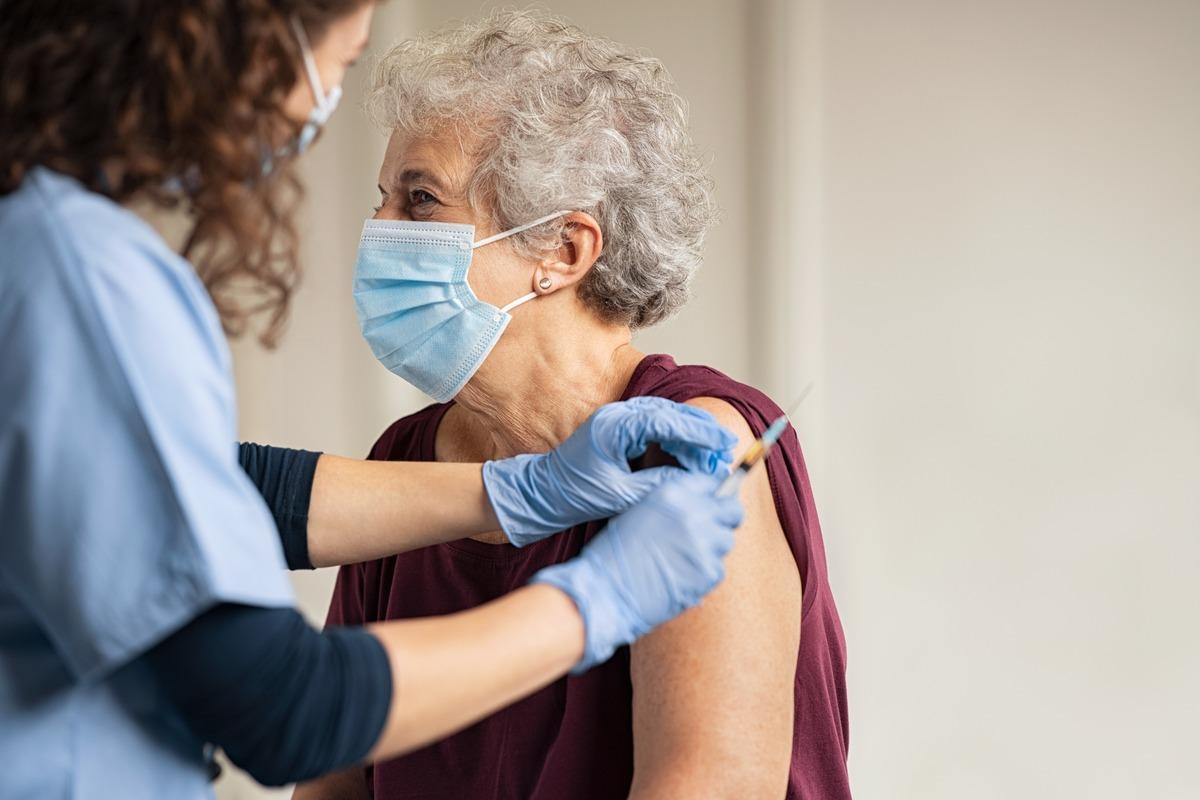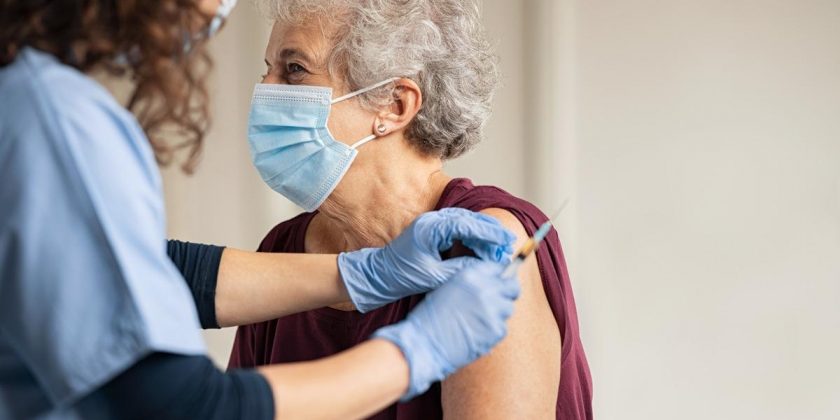In a recent study posted to the bioRxiv* pre-print server, researchers applied a previously developed thermostable self-amplifying ribonucleic acid (saRNA) vaccine to coronavirus disease 2019 (COVID-19).

Background
Messenger RNA (mRNA) vaccines have been very effective against severe acute respiratory syndrome coronavirus 2 (SARS-CoV-2) infections. However, drawbacks such as complex cold-chain logistics, limited durability, and limited access impede their widespread distribution.
In mRNA and saRNA vaccines, RNA is delivered by nanostructured lipid carriers (NLC), which enabled lyophilization for improved stability. Although these vaccines showed promising results in pre-clinical trials, there were difficulties with NLC manufacturing and room temperature stabilization. Thus, a vaccine with good manufacturability, thermostability at non-frozen temperatures, durability, and cross-reactive potency is required to mitigate COVID-19.
The authors of this study had developed an saRNA vaccine (D614G) containing the SARS-CoV-2 Wuhan-D614G spike (S) protein sequence. To mitigate logistics issues, the authors procured the least readily available NLC component, the DOTAP (1,2-dioleoyl-3-trimethylammonium-propane) lipid from multiple vendors, all of which demonstrated similar properties and NLC stability, thus improving vaccine manufacturability. In the present study, they applied this saRNA vaccine to COVID-19 and reported the results.
About the study
The D614G vaccine was first transfected into the human embryonic kidney 293 (HEK-293) cells wherein it showed substantial SARS-CoV-2 S protein expression a day post-transfection. The immunogenicity was evaluated by intramuscular injections of prime and booster vaccine doses three weeks apart.
Next, the diproline and QQAQ mutations were inserted in the D614G vaccines which were then referred to as ‘D614G-2P’ and ‘AAHI-SC2’, respectively. Serum samples obtained post 21 days were used for determining the anti-S binding and neutralizing antibodies by enzyme-linked immunosorbent assay (ELISA) and pseudovirus neutralization assay, respectively.
All the vaccines induced potent anti-S binding immunoglobulin (IgG) titers post both doses, with a substantial increase after the vaccine booster. No significant differences in the ant-S IgG titers were detected between the three vaccines.
All three vaccines majorly retained their neutralization capacity against the Alpha strain. However, the Beta-specific titers reduced significantly with the D614G-2P and D614G vaccines. This decrease was the least with the AAHI-SC2 vaccine. This indicated improved induction of cross-protective immunity by AAHI-SC2, which was therefore selected for further analyses.
Mice were vaccinated with prime and boost AAHI-SC2 regimens at one, 10, and 30 µg doses. Sera were obtained to measure the binding and neutralizing IgG titers. Additionally, bone marrow specimens were collected to evaluate the IgG and IgA-secreting cells using ELISpot assays.
Potent and dose-dependent anti-S IgG titers were observed, which increased significantly (three-fold) after the vaccine booster. High titers were observed against the Wuhan, Alpha, Beta, and Delta strains, although lesser for the Delta and Beta strains. Additionally, a high number of long-lived bone marrow cells secreting IgA and IgG were observed. Notably, even a 1-µg dose induced robust serological responses. These findings indicate the high potency and durability of the AAHI-SC2 vaccine.
The team also assessed cellular immunity post-prime and booster AAHI-SC2 vaccination using T-cell ELISpot assay, flow cytometry, and cytokine immunostaining. In these assessments, significantly high helper T-1 (Th1) secreted-interferon-gamma (IFNγ) and low Th2 secreted-interleukins (IL-5, 17A) expressions were observed, which increased after the booster dose. This indicates that AAHI-SC2 induced a predominantly Th1-based T-cell immune response.
The liquid AAHI-SC2’s short-term and long-term stability were assessed post two weeks and six months of storage, respectively. The vaccines were stored at -20°C, -80°C, 2-8°C, 40°C, and 25°C. The excipient used was 20% w/v sucrose and 5mM sodium citrate. To assess long-term stability, the sodium citrate concentration and the system pH were increased. The vaccine retained its potency at all storage temperatures except 40°C. The unmodified excipient formulation showed the best results.
The AAHI-SC2 immunogenicity was assessed by injecting each stored vaccine intramuscularly into mice and assessing mice sera via ELISA two weeks post-vaccination. The vaccines were immunogenic if they could preserve intact RNA. The -80°C-frozen vaccine and the 40°C stored vaccine were immunogenic for six and three months, respectively.
Interestingly, the lyophilized vaccine stored at 25°C or 4°C continued to induce robust titers even after six months of storage. No significant differences were observed between the titers at these storage temperatures in comparison to freshly prepared vaccines. This indicated the long-term immunogenicity of the lyophilized AAHI-SC2 vaccine after storage at refrigerated and room temperatures.
To summarize, the AAHI-SC2 vaccine, which combined the potency and self-amplifying nature of saRNA with the improved stability and immune-stimulating features of the NLC technology, exhibited several characteristics of a “next-generation” vaccine with induction of potent and durable serological cross-immunity at room temperatures.
*Important notice
bioRxiv publishes preliminary scientific reports that are not peer-reviewed and, therefore, should not be regarded as conclusive, guide clinical practice/health-related behavior, or treated as established information.
- Emily A. Voigt, Alana Gerhardt, Derek Hanson, Peter Battisti, Sierra Reed, Jasneet Singh, Raodoh Mohamath, Madeleine F. Jennewein, Julie Bakken, Samuel Beaver, Christopher Press, Patrick SoonShiong, Christopher J. Paddon, Christopher B. Fox, Corey Casper. (2022). A self-amplifying RNA vaccine against COVID-19 with long-term room-temperature stability. bioRxiv. doi: https://doi.org/10.1101/2022.03.22.485230 https://www.biorxiv.org/content/10.1101/2022.03.22.485230v1
Posted in: Medical Science News | Medical Condition News | Disease/Infection News
Tags: Antibodies, Assay, Bone, Bone Marrow, Cell, Cold, Coronavirus, Coronavirus Disease COVID-19, covid-19, Cytokine, Cytometry, Enzyme, Flow Cytometry, Immune Response, immunity, Immunoglobulin, Interferon, Interferon-gamma, Kidney, Lyophilization, Manufacturing, pH, Protein, Protein Expression, Pseudovirus, Respiratory, Ribonucleic Acid, RNA, SARS, SARS-CoV-2, Severe Acute Respiratory, Severe Acute Respiratory Syndrome, Syndrome, T-Cell, Transfection, Vaccine

Written by
Pooja Toshniwal Paharia
Dr. based clinical-radiological diagnosis and management of oral lesions and conditions and associated maxillofacial disorders.
Source: Read Full Article
